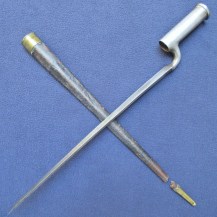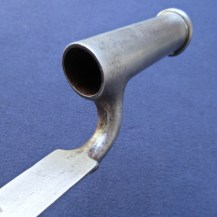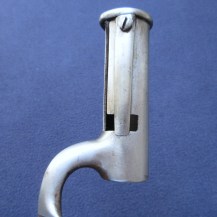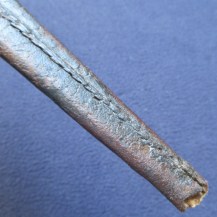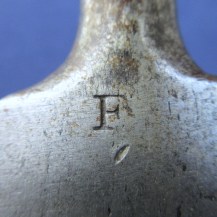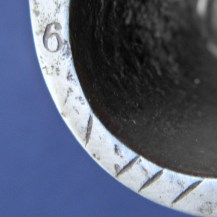British Circa 1820 India Pattern Brown Bess Socket Bayonet with India Spring
Triangular blade with unfullered top surface and fullered lower surfaces. A roughly rectangular leaf spring is attached to the outer surface of the socket, retained by a single screw. Wood-lined black leather scabbard with brass locket and chape piece.
The blade is stamped with the maker’s mark ‘S HILL’, indicating the manufacturer Stephen Hill, who traded from Pritchett Street in Birmingham from around 1830, then changed the trade name to S. Hill & Sons from 1849-1855, an inspection mark ‘D 4’, and the letter ‘F’ at the very base of the blade. The blade markings are partly worn: Indian socket bayonets were repolished often to keep them bright, which often resulted in the loss of detail to the markings. The rear rim of the socket is stamped with ‘6’ and four incised lines. The leather at the throat end is stamped with decorative criss-crossing lines.
The ‘Indian Spring’ was reputedly designed by Ezekiel Baker, the same gunsmith who created the famous Baker Rifle, to improve the fastening of the socket bayonet to the India Pattern Brown Bess musket. This is the later version of the spring introduced around 1820 with an almost rectangular shape, still doing the same job of preventing the bayonet from shifting position once it had been fixed to the rifle, but stronger than the early type, which was more triangular.
The bayonet is clean overall with only small areas of patina and some very light pitting near the tip of the blade. The brass chape piece and a small amount of leather have become detached from the rest of the scabbard. The detached chape piece has several dents, the throat piece has one very small one to its rim. The leather of the scabbard is quite worn in places, with rubbing to raised edges and surface cracking.


